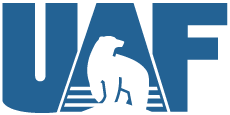Budget update: Nov. 20
November 20, 2019
вАФ by Dan White, chancellor
At , we will discuss the FY20 and FY21 budgets, including strategies to meet the reduction
targets and opportunities for input into decision making. I hope to see you there,
or hear from you online.
In last weekвАЩs column I addressed some of my thinking around vertical reductions.
Additionally, I am asking the vice chancellors and unit leaders to consider the following
options: suspending use of or closing one of our two underground mines used for student
training, replacing one of our three greenhouses with a temporary structure or alternative
for seasonal high volume work, reducing some activities at our two farms and increasing
revenues by monetizing select parcels for lease and/or sale, convert the Kotzebue
campus to a learning center, consider alternative uses or operating models for the
Large Animal Research Station, and continued assessment of the Kodiak Seafood and
Marine Science Center, among others. All of our units have been working hard and thinking
creatively about ways to support their operations.
In the coming weeks, we will get back to our strategic planning documents that were
suspended during the discussion of a UA-wide reorganization. Prior to the hiatus,
the strategic planning task forces had completed draft reports that were ready to
be distributed for public input. The public input phase will restart the first week
of December. More to come on next steps next week. In the meantime, as we think about
budget and the cuts that must be made, we will use the elements of the strategic plan
as guiding principles вАУ Leadership in Alaska Native and Indigenous Studies, Tier 1
research, a modern student experience, growing IP and commercialization, growing our
culture of respect, diversity, inclusion and caring, and revitalizing our academic
programs.
Looking ahead, we will be holding a tuition forum on December 3 to discuss the proposed
tuition increase as well as the broader context of tuition at 51ЈзЅчєўЌш: what it supports,
what an increase means in real terms to students and units, and how it compares to
our peers. My thanks to AS51ЈзЅчєўЌш for catalyzing this discussion, and for all they do
in bringing the student voice to decisions at our university. I continue to be amazed
at the thoughtfulness of 51ЈзЅчєўЌшвАЩs student governance leadership. 51ЈзЅчєўЌш students and we
in leadership are lucky to have them. Thank you for choosing 51ЈзЅчєўЌш.


